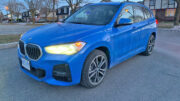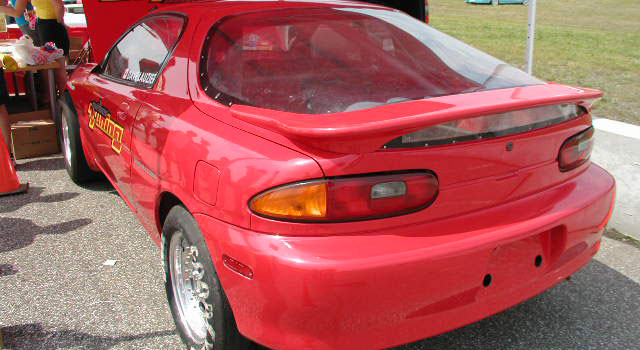The CX-5 is Mazda’s best-selling vehicle with over 2 million units sold worldwide and it continues to enjoy sales growth south of the border though sales have been roughly the same as years prior here in Canada. We saw the model redesigned for the 2017 model year which brought it inline with the brand’s current design language.
Mazda’s look is classy, sporty and easy on the eyes. Last year saw the addition of the Signature trim level in most models, including the CX-5. The Signature trim has features such as Nappa leather seats, genuine layered wood trim, satin chrome accents, a leather-wrapped steering wheel with unique stitching, ambient interior LED lighting, a black headliner and a frameless rearview mirror. This is the trim level that I had the opportunity to test drive for a week and the one you see pictured here in Mazda’s signature red.
Mazda has done very well in providing luxurious accommodations inside their cabins. Similarly, an excellent job is done with the dashboard layout and control functions. This is an underappreciated fact in automotive circles in my opinion. Everything is right where is should be and well within arm’s reach. There are proper dials and knobs for climate and volume controls making basic vehicle operation a breeze. The philosophy is to only have critical driver data displayed on the instrument panel while entertainment data is relegated to the 7-inch infotainment
 screen.
screen.
Mazda CONNECT is the brand’s intuitive and easy-to-use infotainment system. The Commander interface features a dial on the lower console where the driver can manipulate it without looking down. My favorite feature is the volume knob location next to this command wheel. Mazda is one of the only automakers that put it where it should be. There were some issues with the CX-5 system, however as I noticed quite a bit of lag in the response times after making a selection. The interface with Apple CarPlay wasn’t as smooth as I would have liked and I had issues listening to satellite radio while using CarPlay to navigate. This CX-5 was not running the newest version of the software so hopefully a fix will be out soon. I should mention that the new CX-30 I just tested had none of these issues.
I do like the size of the CX-5 for urban travels but the back seat felt a tad small. It’s a compact crossover and you have room for five adults and trunk space to hold luggage, sports equipment or whatever else you need but it will fill up quickly if you want to head to the cottage for a weekend.

Under the hood we find a SKYACTIV turbocharged 2.5-litre four-cylinder engine making 250 horsepower, 310 pound-feet of torque. This engine is available as an option on the GT and standard on the Signature. It packs more punch than the naturally-aspirated engine and thankfully Mazda stayed away from using a continuously variable transmission and chose to pair it with its six-speed SKYACTIV-DRIVE automatic. The CX-5’s acceleration was smooth, crisp and readily available whenever I needed it. If you don’t need the larger motor, the base 2.5-litre four-cylinder will still get the job done with its 187-horsepower output.
The CX-5 holds the road really well. The drive is similar to a car thanks to something called G-Vectoring control technology. While turning the steering wheel, the system modifies engine torque to give the vehicle a slight deceleration G-force, which shifts weight to the front wheels and increases grip. It’s a neat system that can have real tangible benefits. When not turning it can shift torque to the rear wheels for more performance.
There is plenty of competition in the compact crossover segment but the CX-5 can hold its own – especially with a few minor adjustments such as the infotainment system and rear leg room.
The base model CX-5 GX starts at $28,550 but the fully-loaded Signature test vehicle has a sticker price of $42,050.


















